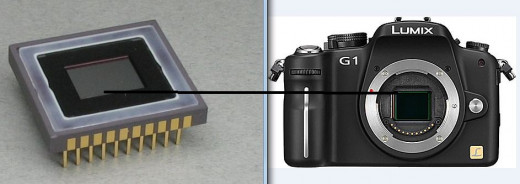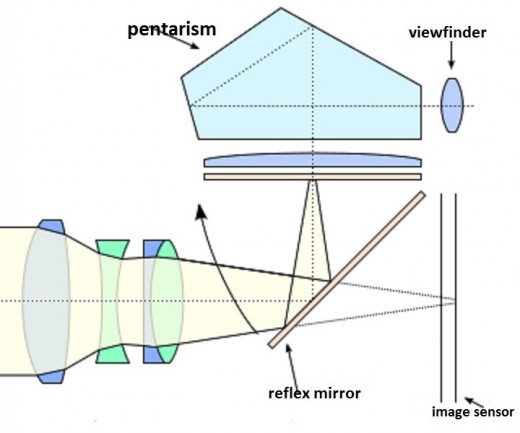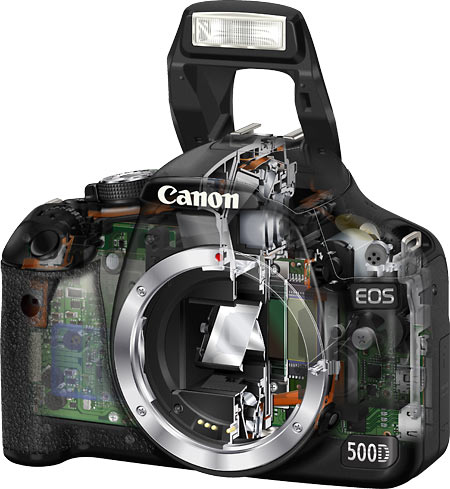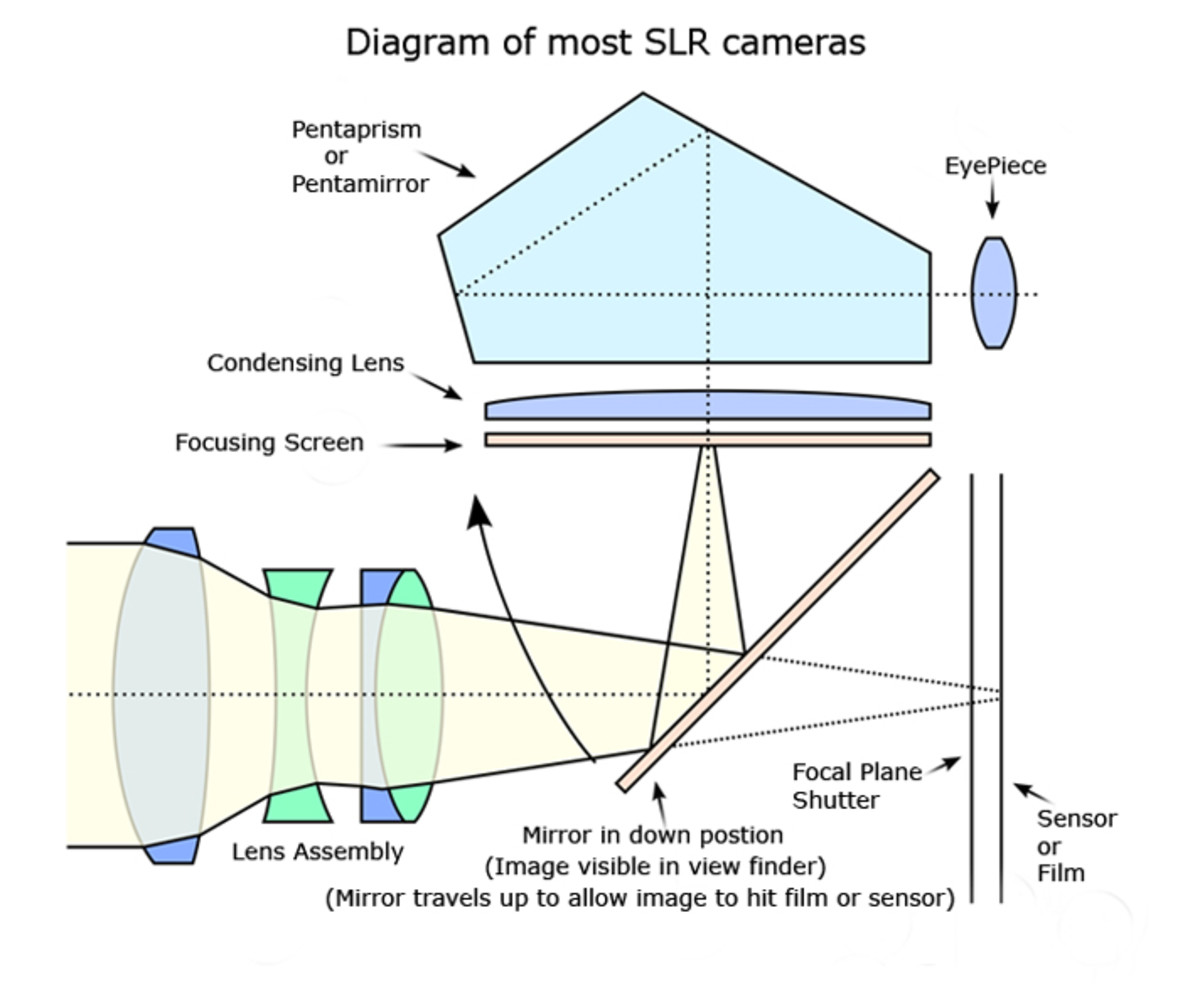DSLR - Digital Single Lens Reflex
What is DSLR?
DSLR stands for Digital Single Lens Reflex and the difference between it and a traditional point-and-shoot camera is its design.
Digital -: There are cameras that use the same design but use film and so they are only referred as SLR, so the ‘D’ simply stands for Digital meaning they use an image sensor instead of film.

Single-Lens -: Because light travel through a single lens
Reflex -: A mirror is used to reflect a portion of that light through to the view finder
Most professional cameras use the same button for opting to either use the LCD or the viewfinder to monitor your image. When you press the button to switch to the viewfinder mode, a click sound is heard, this is because the Reflex mirror is lowered down (at 45°angle) to direct light up to the pentaprism which will then direct it to the viewfinder.

When you click to take a photograph, the mirror swings upwards in the direction of the arrow, the shutter opens, allowing the rays of light to be projected to the image sensor where the image is recorded, after capturing the image, the shutter closes, the mirror returns to 45°angle again

The biggest advantage with this type of design is the fact that the image you will see in the view finder is exactly the image captured by the image sensor. That keeps you a step ahead in terms of gaining quality composition.
Other advantages include, the lens are interchangeable give you the ability to rage from wide angle to super telephoto lenses depending on what you want to capture. They also include other useful settings e.g. speed of shooting multiple images continuously, this is because DSLR have the ability to set very high ISO making it possible to set very high Shutter speeds and achieve the same exposure. The quality of a DSLR is also high due to the larger size of their image sensors which translates into high number of pixels. And above all, they provide you with the ability to either go complete manual or hysterically digital or combine both depending on your creativity.









